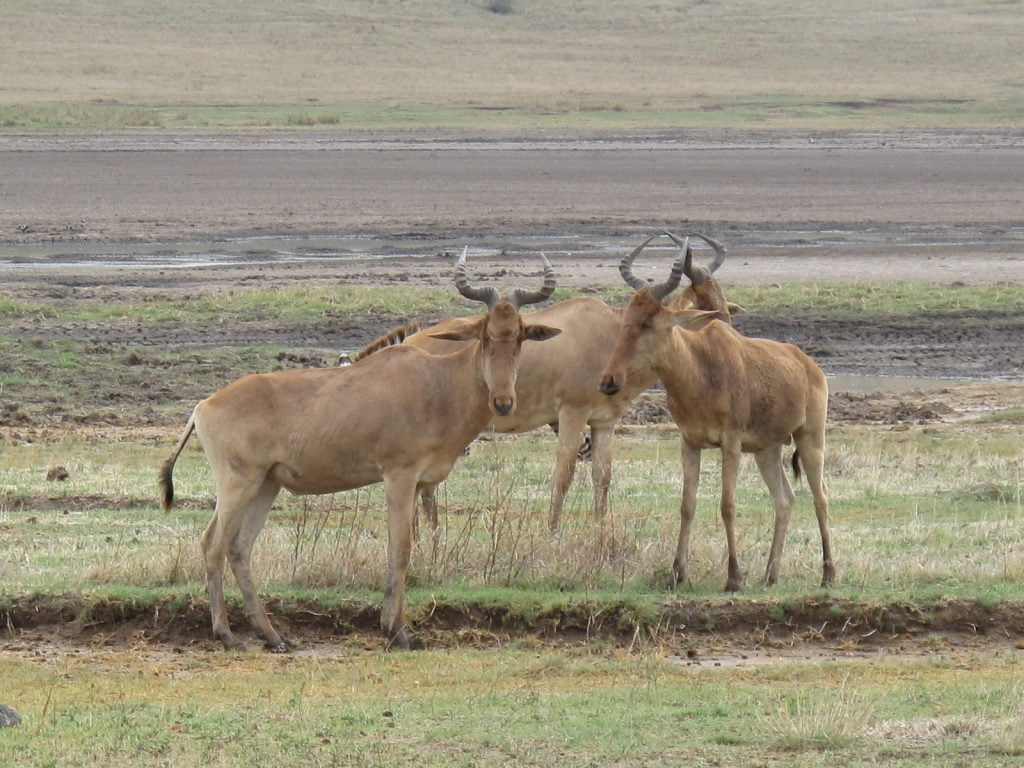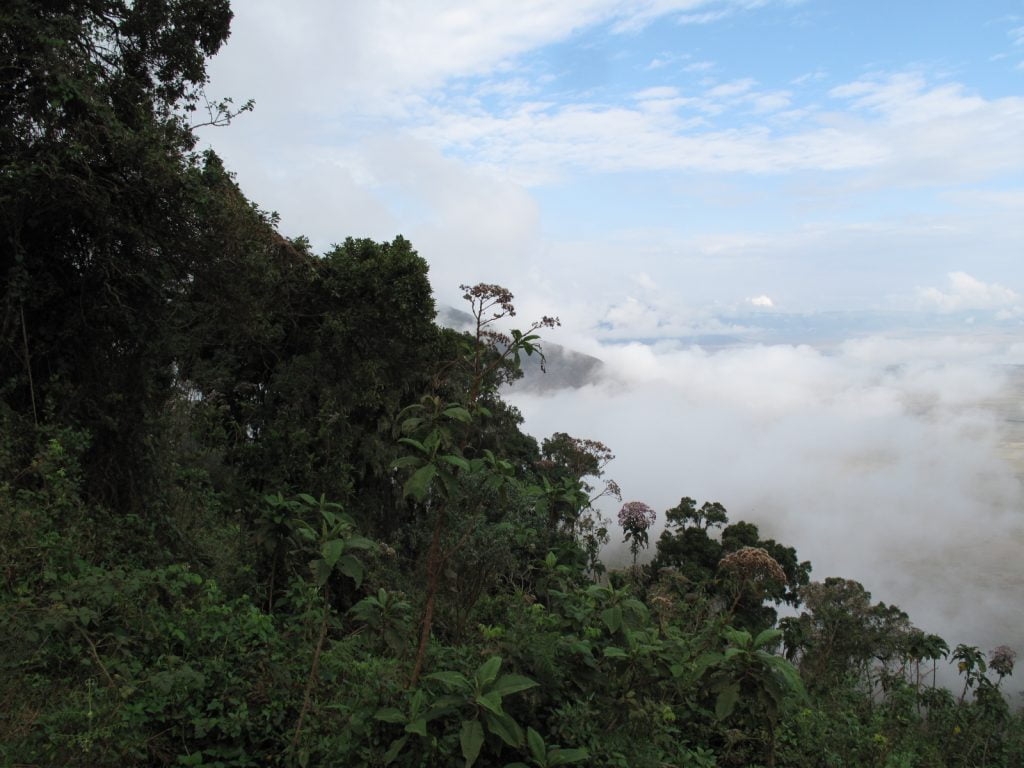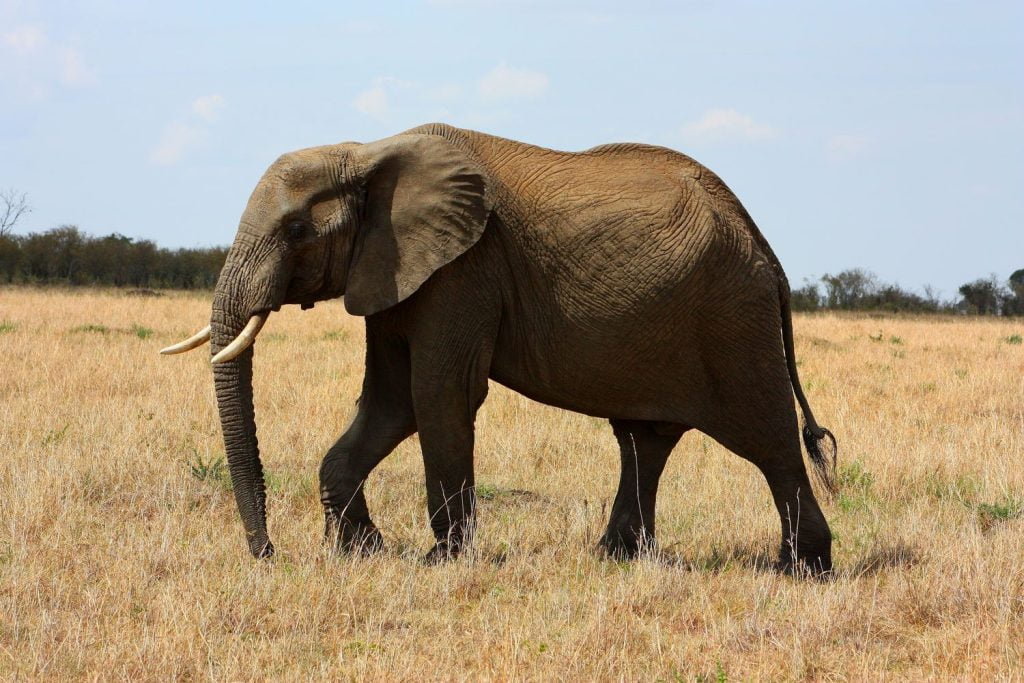Tanzania National Park Treasures:
Embark on an unforgettable safari adventure in Tanzania, where breathtaking landscapes meet a dazzling array of wildlife!
Arusha National Park:
- A Jewel close to Arusha: Explore volcanic craters, lush forests, and the majestic Mount Meru, all within a day trip from Arusha. Spot playful black and white colobus monkeys and elegant giraffes.
With an area of 552 sq km, Arusha National Park is one of the smaller and most beautiful National Parks in Tanzania. Situated only 37 km from Arusha town, the park is very popular for day trips. The Ngurdoto Crater, Momela Lakes, the highland montane forest, and the rugged Mount Meru (4565 Meters Above Sea Level) are the four distinctive features of the park. Mt. Kilimanjaro, towering at 5895 Meters above sea level to the east, is visible on clear days from many locations in the park.
One of the unique attractions of the park is the opportunity to combine game drives and a nature walk in the many places where visitors can leave their safari vehicles and walk in the fresh air. The most common animals found in this park are the Abyssinian black and white colobus monkeys, the velvet monkeys, the red forest duikers, hippos, zebras, giraffes, buffaloes, bushbucks and sometimes the leopard. More than 400 species of birds have been recorded in the park including Eurasian migrants, which can be seen between October and April. Mount Meru 4565 m can be scaled in three to four days, with overnight accommodation in alpine huts on your way up and down.
Mkomazi National Park:
- A Hidden Gem: Witness a diverse ecosystem teeming with wildlife, from graceful gerenuk and powerful lions to critically endangered black rhinos. Hike scenic mountains and embark on thrilling night drives.
Bordering Kenya’s Tsavo West National Park in northeastern Tanzania, Mkomazi which was commissioned as a Game Reserve in 1951 has been gazetted a National Park from 2008. Located to the east of Pare Mountains near Same town, about 190kms from Arusha, Mkomazi National Park lies along the edge of a semi-arid savanna arc that stretches into Kenya’s Tsavo West, falling into the Mkomazi-Tsavo Ecosystem, which is the second largest trans-boundary ecosystem in East Africa after the famous Serengeti – Maasai Mara. Before coming under TANAPA authority, Mkomazi, with an area of 3,245sq km, was managed by the government as a game reserve. As a national park, Mkomazi have the potential to develop into a glorious sanctuary where visitors will have the opportunity to explore more of the Tanzania’s hidden natural treasures.
Umba River on Mkomazi’s south eastern border and other water holes keep the park teeming with small and large mammals, including silver backed jackal, lion, cheetah, leopard, giraffe, buffalo, elephant and zebra, with the rare gerenuk, lesser kudu and fringe-eared oryx easily sighted. There is a sanctuary for the endangered black rhino and another one for the wild dog created within the national park to protect these rare species. The Mkomazi Rhino Sanctuary has attained international renown for rehabilitating rhino, and it offers viewing and educational opportunities for visitors. Mkomazi is a fascinating destination for bird watchers, boasting more than 450 avian species including some Eurasian migratory species.
Quite a few activities can be conducted in Mkomazi, including game drives, walking safaris, mountain hikes and bird watching. Mkomazi can be visited throughout the year, with late June to early September best for large mammal and bird watching, Mkomazi National Park would smoothly fit into the Arusha – Usambara – Tanga – Pangani – Saadani – Dar es Salaam / Zanzibar circuit, or may be visited as a single destination from Arusha or after Kilimanjaro climbing.
Tarangire National Park:
- A Paradise for Elephant Lovers: Witness herds of mighty elephants against a backdrop of acacia woodlands. Keep your eyes peeled for unique tree-climbing pythons and rare antelopes.
Tarangire National Park lies 120 km south of Arusha, along The Great North Road highway, and is very popular for day trips from the town. Tarangire offers a wide variety of wildlife in its area of 2,850 sq. km. As in all ecosystems, the vegetation and the types of animals you find are closely correlated. The principal features of the park are the flood plains and the grassland, mainly comprising of various types of acacia trees, and a few scattered baobabs, tamarind and the sausage trees. The Tarangire River, after which the park is named, provides the only permanent water for wildlife in the area.
When the Maasai Steppes dry up with the end of the long rains in June, migratory animals return to the Tarangire River, making Tarangire National Park second only to Ngorongoro in the concentration of wildlife. This period stretches between June and October and it is the best season for game viewing in Tarangire. The most common animals found in the park include zebras, wildebeest, lions, leopards, waterbucks, giraffe, elephants, gazelles, impala, gerenuk, lesser kudu and the beautiful fringe-eared oryx. You may be lucky to spot the tree-climbing python, for which the park is famous, or the greater kudu and the roan antelope which are rare species in Northern Tanzania. Over 550 bird species have been recorded.

Lake Manyara National Park:
- A Birdwatcher’s Paradise: Be captivated by a vibrant tapestry of birdlife, including thousands of pink flamingos painting the soda lake. Spot the park’s iconic tree-climbing lions lounging in the branches.
Located 125 km west of Arusha town, nestling by the wall of the Great Rift Valley, Lake Manyara National Park is one of the oldest and most popular sanctuaries in East Africa. The park has a large variety of habitats, making it possible to support a wealth of wildlife in its small area. The main habitats include the shallow soda lake itself which occupies 77% of the National Park total area of 330 sq. km, the ground water forest, open grassland, acacia woodland and the rift wall.
The most famous spectacle in the park is the tree-climbing lions, which are occasionally seen along branches of acacia trees. Other animals found in the park include buffalo, elephants, leopards, baboons, impala, giraffes, zebra, wildebeest, ostrich and hippos. Popularly referred to as an ornithologist’s paradise, Lake Manyara National Park contains over 400 bird species found in most savanna and river habitats in East Africa. Common water birds to be seen here are pelicans, spoonbills, Egyptian geese, hammerkops and the migratory flamingoes, which arrive in hundreds of thousands creating one of Africa’s great natural sights over the soda lake.

Ngorongoro Conservation Area:
- A Cradle of Life: Witness a breathtaking spectacle within the caldera of a massive volcano. Explore the rich volcanic soils teeming with wildlife, from grazing zebras to playful lion cubs.
A UNESCO protected World Heritage Site and an International Biosphere Reserve, the Ngorongoro Conservation Area is situated some 190 km. west of Arusha town, between Lake Manyara and Serengeti National Parks. Covering approximately 8,292 square km, the Ngorongoro Conservation Area consists of the Ngorongoro Crater itself, the Olduvai Gorge and Ndutu, the Empakai crater and the Oldonyo Lengai Mountain which lies just outside the border in Lake Natron basin. The Ngorongoro Conservation Area is a pioneering experiment in multi-purpose land use where people (the Maasai), their livestock and wildlife coexist and share the same protected habitat. Wild animals are protected as in the National Parks. The craters of Ngorongoro and Empakai are reserved exclusively for wildlife, while the rest of the Conservation Area is shared by wildlife, people and livestock. The Maasai, the main residents of Ngorongoro, are pastoralists who move widely with their herds of cattle, sheep, goat and donkeys in search of pasture and water. In recent years the Maasai have been encouraged to work on the land outside the Conservation Area and supplement their traditional diet of milk and meat.
The Ngorongoro Crater, which is the central attraction in the area, is the largest Caldera in the world that has its walls intact. The Ngorongoro Crater floor, a sheer drop of 610 metres below the crater rim, has an area of 304 sq. km, with a diameter of 19 km. The sight of the Ngorongoro Crater is simply stunning. It is impossible to give a fair description of the size and beauty of the Crater, for there is nothing with which one can compare it, Indeed it is one of the Wonders of the World. The crater floor is home to tens of thousands of plains animals, including wildebeest, zebra, gazelles, elands, and a large predator population of lions, hyena and jackal which can all be viewed at close quarters. The rare black rhino can be viewed here, and if you are lucky you can see cheetah and leopard. The altitude at the crater rim is about 2286 metres above sea level, and temperatures can get quite chilly in the evening, especially from May to September.

Serengeti National Park:
- Witnessing the Great Migration: Experience the heart-pounding drama of the wildebeest migration, one of nature’s greatest spectacles. Explore vast plains teeming with lions, cheetahs, and an abundance of other animals.
A World Heritage Site and recently proclaimed a World Wide Wonder, Serengeti National Park is undoubtedly one of the most famous wildlife sanctuaries in the world. Covering an area of 14,763sq km, the park is located some 320 km to the northwest of Arusha, lying in a high plateau between the Ngorongoro highlands and the Kenya/ Tanzania border, and extending almost to Lake Victoria to the west. Aptly named “endless plains” by the Maasai people, you immediately experience this vastness as you enter the south eastern plains of the park from Ngorongoro.
Declared a protected area in 1921 and gazetted as a National park in 1951 Serengeti is the oldest National Park in Tanzania, The principal features of the Serengeti are the short and long grass plains in the south and east, the acacia Savannah in the central areas, the hilly and densely wooded areas in the north and the extensive woodland in the west. There is a variety of scenery, which include the plains, lakes, hills and the rock outcrops called kopjes.
The main game drive areas in the Serengeti are the Seronera Valley, the Western Corridor, and Lobo or northern Serengeti. The Seronera valley in central Serengeti, endowed with permanent surface water, attract a large concentration of wildlife throughout the year. Common animals that can be seen here are lions, buffaloes, impalas, hippos, waterbucks, elephants, cheetahs and the leopard. From December to April, southeastern Serengeti plains provide the best opportunities for game viewing as hundreds of thousands of the migratory animals are concentrated in this part attracted by the short palatable grass.
Between May and July, when drought sets in, Serengeti is the site of one of the most breathtaking events in the animal kingdom – the migration of thousands of wildebeest heading southwest, north or west in search of water and greener pastures. The Lobo area remains rich in wildlife during the dry months of August to November when most of the game has moved from the grass plains in the south. This is also true of the Western Corridor towards Lake Victoria when the migration usually lingers in the area between June and July. Serengeti provides sanctuary to the highest concentration of plains animals in the world, with an impressive population of carnivores including lions, leopards, cheetah, and spotted hyena. There are over 530 species of birds in the Serengeti.

Nyerere National Park (formerly Selous Game Reserve):
- Untamed Africa Awaits: Explore the largest national park in Africa, a pristine wilderness with diverse habitats. Embark on thrilling boat safaris along the mighty Rufiji River, spotting crocodiles and a vast array of bird-life.
Nyerere National Park is the northeastern part of the huge Selous Game Reserve set aside for photographic safaris, which was upgraded to the national park status in November 2019. The park was named after the first president of Tanzania, the late Mwalimu Julius Nyerere, in recognition for championing conservation and protection of wildlife in the country. Nyerere National Park, is one of the most beautiful and game-rich areas in the ecosystem of Selous Game Reserve, spanning the Rufiji River basin in southeastern Tanzania.
With an area of about 30,893sqkm, Nyerere National Park is the largest national park in Africa. It is perhaps one of the most pristine wildernesses still remaining in Africa, with a wide variety of wildlife habitats, including open grasslands, Miombo woodlands, swamps and riverine forests in the many tributaries of the mighty Rufiji River which flows through the National Park to the Indian Ocean. Its wildlife is spectacular, with some of the largest population of mammals and reptiles in Africa, including buffaloes, elephants, hippos and crocodiles which can be seen here.
Nyerere National Park, together with the remaining part of Selous Game Reserve, is considered to be the last stronghold of the African wild dog. Other common wildlife include the wildebeest, zebra, giraffe, eland, the greater kudu, sable antelopes, waterbuck, impala, lion, leopard, the spotted hyena, cheetah, baboon, vervet and blue monkey, and the black and white colobus monkey which can be viewed in riverine forests. About 440 species of birds both resident and migratory have been observed in the national park. Nyerere National Park is located in south eastern Tanzania, bordered by Mikumi National Park to the northwest and Udzungwa Mountains National Park to the west.
The park offers a wide variety of game viewing opportunities including the thrilling experience of a walking safari in the company of an armed ranger. The many waterways in the park provide an excellent natural setting for boat safaris, both for big game viewing and bird watching. This is in addition to the game drives in specially designed safari vehicles which, combined with boat and walking safaris, offer an exciting and rich game viewing itinerary unique to Nyerere National Park. The best time to visit is from June to October. During the long rains, between March and May, some parts of the park are temporarily closed for game drives due to poor accessibility.
Mikumi National Park:
- A Wildlife Spectacle: Witness a diverse range of animals, from grazing zebras to powerful lions, easily accessible from Dar es Salaam. Explore floodplains and woodlands teeming with life.
Sharing a common border and ecosystem with Nyerere National Park and the Selous to the south, Mikumi National Park is only three to four hours drive from Dar es Salaam, lying astride the main highway to Zambia, and en route to the National Parks of Udzungwa Mountains, Ruaha and Kitulo. The main feature of the park is the Mikumi flood plain, along with the mountain ranges that border the park on two sides. Open grasslands dominate in the flood plain, eventually merging with the miombo woodland covering the lower hills. Mikumi National Park covers an area of 3,230 sq km, and is rich in wildlife including buffalo, wildebeest, zebra, lion, elephant, impala, hippos, baboon, giraffe, warthog, waterbuck and eland which can be viewed throughout the year.
Reptiles including crocodile, monitor lizard and python are also resident in the park. Other animals that can be sighted although rare are the Sable Antelope resident in the southern part of the park bordering Nyerere National Park and the Selous, the Greater Kudu, leopard, and the wild dog also known as the African Hunting Dog. More than 400 bird species have been recorded, including European migrants during the rainy season.
Mikumi National Park is one the most popular visitor destinations. Being close to Dar es Salaam on good road, day trips are popular especially for those who have little time to spend an overnight there. But it is recommended to spend at least a night in Mikumi to enjoy a fulfilling game drive in this beautiful park. A number of accommodation facilities are available in Mikumi.
Ruaha National Park:
- Untamed Beauty: Discover a hidden gem, teeming with wildlife rarely seen elsewhere. Explore the banks of the life-giving Ruaha River, a haven for elephants, hippos, and an abundance of bird-life.
Ruaha National Park takes its name from the Ruaha River, which flows along its southeastern border. The river provides permanent water in the park, and during the dry season animal concentration along its banks is spectacular. Ruaha National Park is about two to three hours drive from Iringa, a famous town on the Dar es Salaam to Zambia highway. Covering an area of 20,226 square kilometers, Ruaha is the second largest National Park in Tanzania. Its borders were extended in 2008 to include Usangu Game Reserve to protect the Ihefu wetlands and the Great Ruaha River catchment areas and biodiversity.
This unspoiled wilderness is rich in flora and fauna, and contains a wide variety of animals that includes Greater and Lesser Kudu, roan and sable antelopes, which are rarely seen in most other game parks especially in Northern Tanzania. Ruaha National Park is famous for its herds of elephant and buffaloes. The Ruaha River, which plays an important role in the ecosystem of the park, provides sanctuary to a large number of hippos and crocodiles. During the dry season the river attracts great quantities of game including lions, leopard, hunting or wild dog, impala, waterbuck, warthog, giraffe, and elands. In the plains ostriches, cheetahs and Grants Gazelles can be seen. The park is rich in bird life throughout the year, with over 550 bird species recorded.
The best time for game viewing is during the dry season, from May to December. During the wet months from January to April some tracks may not be accessible, but the park is a display of lush scenery with more than 1600 species of trees, wildflowers, and is excellent for bird-watching.








